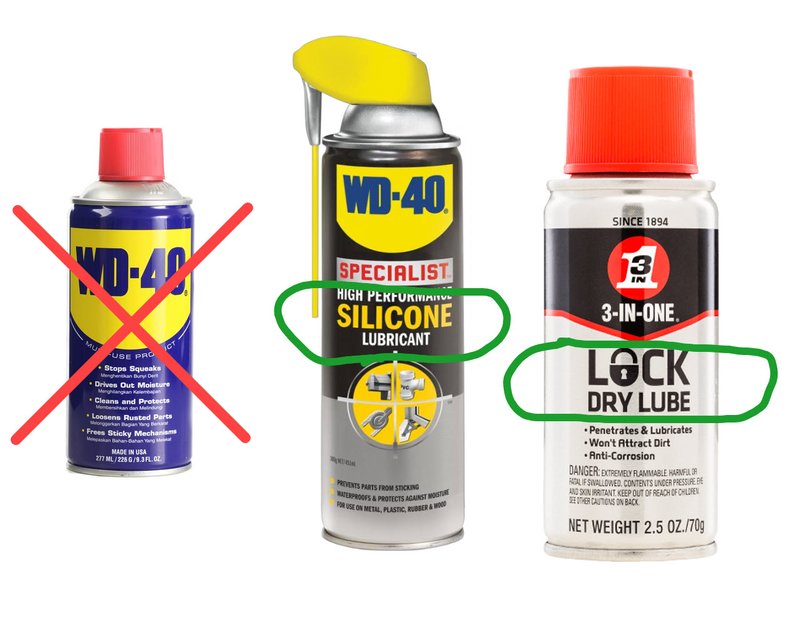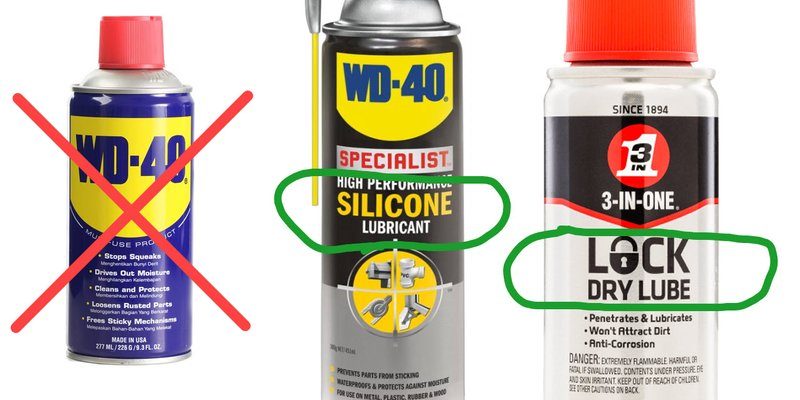
Keeping your lock cylinder plugs clean and well-maintained isn’t just about convenience. A dirty or neglected plug can mess with the lock’s inner workings, make your key jam, or eventually force you to replace the whole lock. Yikes. The good news? Cleaning and maintaining this part isn’t rocket science. With a little know-how and some basic tools, you’ll have your lock turning smooth as butter—no locksmith required.
What Is a Lock Cylinder Plug And Why Should You Care?
If you’re picturing a whole chunk of metal, let me clarify: the *lock cylinder plug* is the rotating inner part of the cylinder where your key goes in. When you insert your key, it lines up tiny pins inside, allowing that plug to spin and open the lock. Without it, the lock is basically a paperweight.
Here’s the thing—because the cylinder plug has so many moving parts packed into a tiny space, any dust, dirt, or old lubricant can cause trouble. Imagine pouring sand into a watch. Things grind, stick, or stop moving altogether. That’s why even a little buildup inside the cylinder plug can make a modern residential lock, like a Kwikset or Medeco, start acting up.
Now, you might be wondering if it’s really worth the effort. Honestly, it is. A well-maintained lock keeps your doors secure, your key working every time, and your stress levels much lower. Plus, taking care of the cylinder plug extends the overall lifespan of that pricey brand-name lock.
What Causes Lock Cylinder Plugs To Get Dirty Or Stuck?
Lock cylinders aren’t sealed tight. That means dust, pollen, pocket lint, and even droplets of water can sneak inside over time—especially on outdoor locks or garages. If you use a remote-controlled deadbolt (or a smart lock), you still have a backup manual key slot. That slot faces all the same gunk as older, traditional locks.
Let me explain how this happens in slow motion: every time you use your key, you might be pushing bits of debris into the plug. If you’ve ever opened your door with sticky or greasy fingers, that residue can end up inside the cylinder, too. Over months—or honestly, even weeks—these tiny particles mix with old lubricant and turn into a gritty sludge.
Pro tip: Cold weather can make things worse. Moisture inside the plug can freeze, causing even more stubborn jams.
Besides the obvious dirt, sometimes the problem comes from using the wrong cleaning sprays or oil-based lubricants, which attract dust and gum up the works. Over-cleaning, or spraying random chemicals into the keyway, can do more harm than good—sort of like washing a wool sweater in hot water.
How Often Should You Clean and Maintain Lock Cylinder Plugs?
Honestly, most people forget about their locks until something goes wrong. Here’s a better approach: make cleaning lock cylinder plugs part of your seasonal home maintenance—think spring cleaning or right before winter hits. If your lock is in a dusty area or you’re near the ocean (hello, salty air), you might want to check it more often.
A quick rule of thumb:
- Typical home or office locks: Clean every 6–12 months.
- High-traffic or outdoor locks: Check quarterly.
- After heavy weather: Inspect for debris or moisture right away.
If you notice your key sticking, hear scraping sounds, or if the lock feels “crunchy” when turning, that’s a sign to clean it immediately—don’t wait for a full lockout. Brand doesn’t matter here; Yale, Kwikset, Schlage, or off-brand, the same basic rules apply.
Step-By-Step: How To Clean a Lock Cylinder Plug Safely
Ready to dive in? Here’s a simple, safe method that works for almost any lock cylinder plug, whether it’s on your front door, mailbox, or even a remote key fob backup slot.
- 1. Gather supplies: You’ll need a can of pressurized air (like what you use for keyboards), a small brush, and a non-oil-based lock lubricant (graphite powder or Teflon-based sprays). Keep paper towels handy, too.
- 2. Blow out debris: Insert the straw from your air can into the keyhole and give it a few quick bursts. This will dislodge dust and loose grit.
- 3. Brush the keyway: Gently use a soft-bristled brush (a clean toothbrush works in a pinch) to sweep away anything near the opening.
- 4. Lubricate: Apply a small amount of your chosen lubricant directly into the cylinder plug. Avoid messy oils. Insert and remove your key a few times to spread the lubricant.
- 5. Wipe off excess: Use a paper towel to catch and remove anything that drips or oozes out.
Never use WD-40 or heavy oils in a lock cylinder plug! They attract more dirt and can gum up the pins, causing exactly the problems you’re trying to avoid.
What About Troubleshooting Jammed or Stubborn Cylinder Plugs?
Sometimes you follow all the best practices and still end up with a stuck lock. Don’t panic. Most jams can be resolved with patience and the right approach.
First, check if the key itself is worn out or bent. Keys wear down faster than you’d think, especially if you use a remote or universal key that wasn’t cut perfectly. Trying to jam a bad key into a dirty lock can make things worse.
If the key is fine, try reapplying your dry lubricant, then gently insert and remove the key several times. Don’t force it. If it still feels stuck, hold the key straight and tap the back (gently!) to see if that frees up stuck pins or debris.
For electronic locks with manual backup, sometimes the issue is with the lock’s *code* or *sync* mechanism not matching up with the physical plug. In those cases, a reset or re-pairing might help—just follow the brand’s troubleshooting guide.
If the cylinder plug simply won’t budge (or the key is stuck inside), it’s time for a professional locksmith. Forcing the lock can seriously damage both the plug and the entire lock mechanism.
Should You Take the Lock Apart? When To Call A Locksmith
You might be tempted to disassemble the lock cylinder plug yourself, especially if you’ve watched a few YouTube videos. Here’s the honest truth: unless you’re confident and have experience with lock mechanisms, it’s easy to lose springs, pins, or tiny parts. These can be nearly impossible to put back together without special tools.
Take Schlage or Medeco cylinder plugs, for example. They use security pins and tight tolerances. If you accidentally knock a pin loose, the lock may never work right again. You could also void your warranty or—worst case—leave your property wide open.
If you’ve cleaned and lubricated the plug but still have problems, don’t risk further damage. A professional locksmith can quickly diagnose whether you need a simple fix, a new cylinder, or a full lock replacement.
Comparing Lubricants: Which One Is Best For Lock Cylinder Plugs?
This is a hot topic among DIYers and locksmiths alike. Should you use graphite powder, silicone spray, or something else? Let me break it down.
- Graphite powder: Classic and reliable. It’s dry, doesn’t attract dust, and works especially well in colder climates. Downside? It’s messy and can stain surfaces.
- PTFE or Teflon-based spray: Modern favorite. These sprays don’t leave much residue and remain slick even in humidity. They’re great for both residential and electronic locks with manual keyways.
- Oil-based lubricants: Avoid these in lock cylinder plugs. They gum up the works and trap dust and pollen inside—turning your lock into a sticky mess over time.
For most people, a small bottle of graphite powder or a dry Teflon spray is the happiest medium. Both are easy to use and won’t interfere with codes, syncs, or reset routines on electronic locks.
How Maintaining Cylinder Plugs Extends Lock Life (And Saves Money)
Here’s something folks don’t always realize: a tiny bit of care for your lock cylinder plug can add years to your lock’s lifespan—whether it’s a $20 off-brand model or a high-end Schlage.
A clean, lubricated plug means less friction on the pins and springs, so the lock works smoothly every time. This prevents wear and tear on both the plug and the key, reducing the risk of jams or broken keys. If you use an electronic remote or smart lock, keeping the manual cylinder clean is your backup plan if the battery dies, or you need to reset the system.
Imagine having to replace an entire lock—or getting locked out in bad weather—just because of a little preventable grit. Doesn’t sound great, right? Honestly, spending five minutes every few months is a small trade-off for years of trouble-free security.
Final Thoughts: Keeping Lock Cylinder Plugs In Top Shape
Lock cylinder plugs may be the unsung heroes of your home’s security, but giving them some basic TLC pays off big time. Clean out debris, use the right lubricant, and avoid quick “hacks” that promise miracles but end up causing more issues. For brands like Kwikset, Yale, or Schlage, a careful touch is the best kind of troubleshooting.
A well-maintained plug keeps your lock easy to use, your key safe from breakage, and your doors reliably secure—no matter the weather or how many times you reset or sync your remote system. So, next time you turn your key and it slides in smoothly, you’ll know exactly why. And if you ever run into trouble, you’ll have the confidence (and the know-how) to handle it right.
